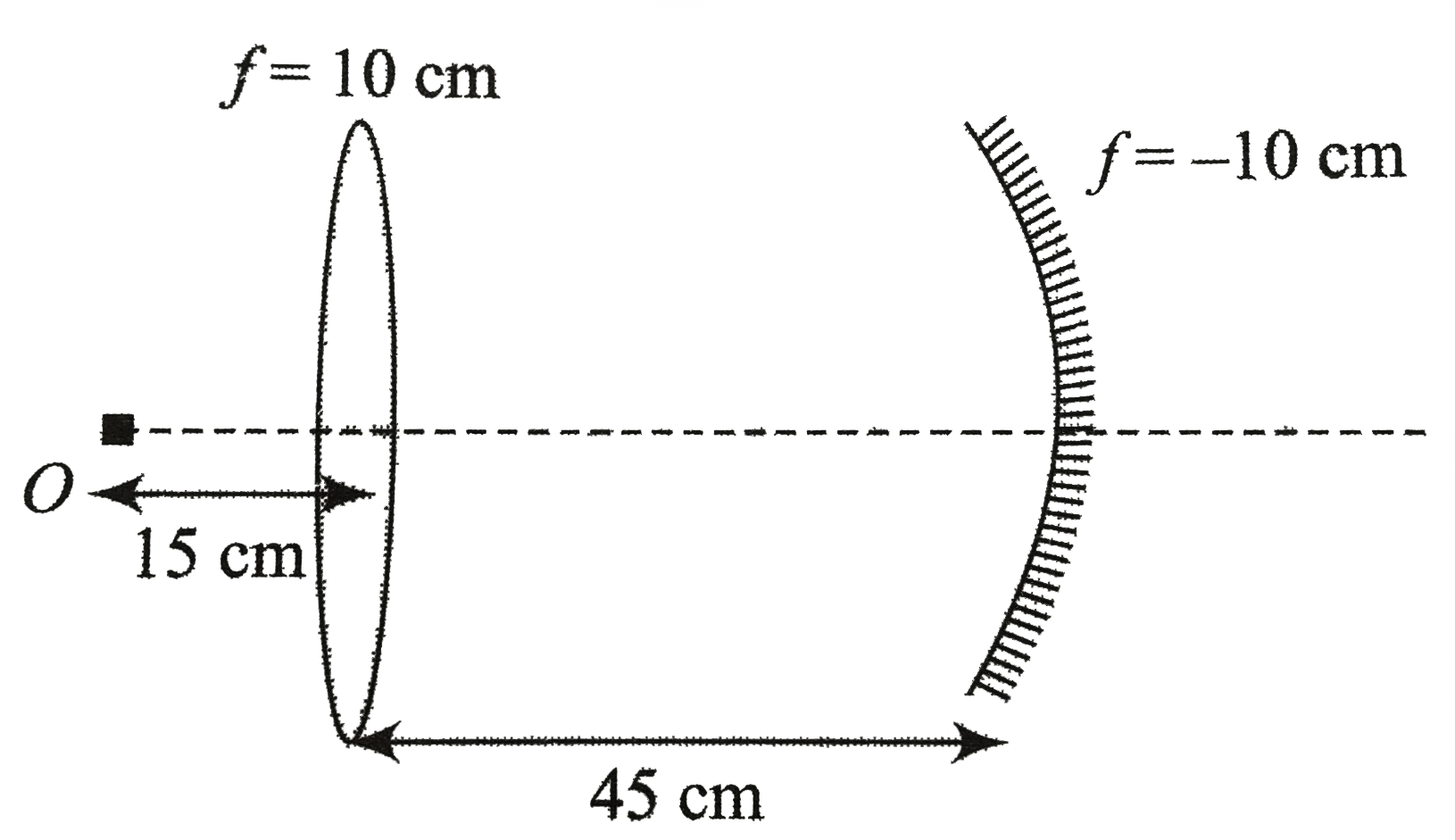See the figure. Find the distance of final image formed by mirror

Shift =3(1−13/2)
For mirror object is at a distance
=21−3(1−13/2)=20 cm
∴ Object is at the centre of curvature of mirror. Hence the light ray will retrace and image will formed on the object itself.
Topper's Solved these Questions
- GEOMETRICAL OPTICSBOOK - MOTIONCHAPTER - GEOMETRICAL OPTICSEXERCISE - Exercise - 1 Section A - Plane Mirror
12 Videos
- GEOMETRICAL OPTICSBOOK - MOTIONCHAPTER - GEOMETRICAL OPTICSEXERCISE - Exercise - 1 Section B, C, D, E - Mirror formula and Magnification, Velocity in Spherical Mirror, Cutting of Mirrors, Combination of Mirrors, Intensity of light
10 Videos
- FLUIDBOOK - MOTIONCHAPTER - FLUIDEXERCISE - Exercise-4 level-II
5 Videos
- GRAVITATIONBOOK - MOTIONCHAPTER - GRAVITATIONEXERCISE - Exercise - 4 Section - B Previous Years Problems
15 Videos
Similar Questions
See the figure
Find the distance fo final image formed by mirror

View SolutionAn object is placed on the principle axis of a concave mirror of focal length 10cm at a distance of 21cm from it. A glass slab is placed between the mirror and the object as shown in figure.
Find the distance of final image formed by the mirror.

View Solution
Knowledge Check
The figure shows two parallel plane mirrors placed 10cm apart. An object O is placed 7cm from mirror M1. Then the distance of final image formed from mirror M1 is:
 A7cmB13 cmC14 cmD∞
A7cmB13 cmC14 cmD∞A point ofject 'O' lies in front of the lens as shown in figure. Find the final position of image formed by the combined lenses.
 A10cm to the right of the lens CB15cm to the right of the lens CC20cm to the right of the lens CD30cm to the right of the lens C
A10cm to the right of the lens CB15cm to the right of the lens CC20cm to the right of the lens CD30cm to the right of the lens C
Find the distance of final image from mirror.

View SolutionIn Figure., find the position of final image formed.

View SolutionIn Figure. , find the position of final image formed.

View SolutionA particle is moving at a constant speed V from a large distance towards a concave mirror of radius R along its principal axis. Find the speed of the image formed by the mirror as a function of the distance x of the particle from the mirror.
View SolutionApparent distance of the image formed by a concave mirror dipped in water
Find the location of the final image of O formed by the system (Fig. 34-8). Assume that O is on the principal axis of the concave mirror.
View Solution
As shown in figure. L is half part of an equiconvex lens (μ=1.5) whose surface have radius of curvature R=40cm and its right surface in silvered. Normal to principal axis, a plane mirror M is placed on the right of lens. A small object O is placed on left of the lens such that there is no parallax between final images formed by the lens and mirror. If transverse length of final image formed by the lens is twice that of image formed by the mirror. Calculate distance a between lens and object and distance b.
View Solution

